A roundup of reflections on what it means to be a leader from an array of people in various management roles across public power utilities, joint action agencies, and associations. Some of these ‘rising leaders’ have been in public power for decades, while others are newer to the sector, but all were recognized by colleagues for their leadership.
Who’s included:
- Jeremy Ash, chief operating officer, Kansas City Board of Public Utilities, Kansas
- Allison Bueché, director of customer and community relations, Kerrville Public Utility Board, Texas
- Phil Calderone, substation and distribution engineering lead, City of Naperville Electric Utility, Illinois
- Adam Dunne, working lineman foreman, Holyoke Gas and Electric, Massachusetts
- Alicia Holmes, assistant general manager, customer care and solutions, Azusa Light and Water, California
- David Logsdon, director of electrification and strategic technology, Seattle City Light, Washington
- Jake Oelke, vice president of energy services, WPPI Energy, Wisconsin
- Amber Teitt, assistant vice president, debt management, American Municipal Power, Ohio
What has it been like to work in public power? What about this sector attracts you to it?
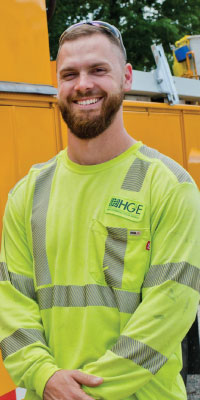
Dunne: I started off going to college for engineering. I was awarded a scholarship [from HGE] my senior year of high school that allows you to shadow each department. While I was shadowing the line crew, it caught my interest more than I anticipated. I started to realize that rather than being indoors, working at a desk, I preferred the outdoor experience - working on trucks, etc. It’s nice to work for the city that you grew up in, nice to be the ones to turn the power back on.
Holmes: I was looking for something that would work well with my school schedule. I was getting a bachelors in finance, and their customer service was connected to finance. I was able to do a lot of technical projects, but also had the opportunity to help people. It was a perfect nexus for what I wanted to do and what genuinely interested me. I’ve spent the majority of my career in public power. I am passionate about helping people. Especially where my position is focused, I oversee all of our customer-facing touch points. I enjoy having the opportunity to help and educate customers on what programs may help them financially and seeing our customers’ reactions to what we as a utility are doing to serve them.
Ash: As I came to public power, it felt like more than a job. It felt like a team, a family, they really cared not only about their organization, but the community they served.
Oelke: I am inspired by the concept of community, fighting for the underdog, and bringing people together around things that matter to them. I feel extremely fortunate that nearly everything I have had the opportunity to work on throughout my career in public power falls into one or more of those buckets.
Teitt: Public service has been the focus of my career. Transitioning to public power [from municipal and state governments] allowed me to draw upon experience in public finance and learn a new industry. My role has given me a wide breadth of various aspects of the industry, our organization as a whole, and the challenges public power faces. I’ve got the opportunity to work directly with [AMP’s member] communities, whether in sharing data or facilitating financing a local project.
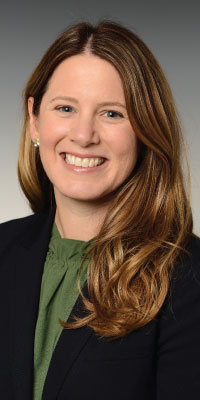
Logsdon: I have worked in private industry, for an investor-owned utility, and now in the public power sector. One of the most important questions that a leader can ask themselves is, “Who are you acting for?” Public power, more than any of my previous roles, has made that a simple and straightforward question to answer: we are here to serve our customers. That clarity and the alignment with my personal values makes it much easier to show up as an authentic leader for my teams. I have also had the privilege in the last three years to serve in groups, such as the American Public Power Association’s Emerging Trends Taskforce, and have seen the sector embracing energy transition and innovation. Working to equitably decarbonize end uses of energy is my primary motivator and I have found this sector to be the key means to have an impact and address climate change and historic injustices at the same time.
Calderone: In one word: rewarding. I love seeing the positive impact my contributions have to the community. I also get to work with a variety of leaders in a way I thought I never would as an engineer. Coming out of college, I thought I’d be sitting behind a desk doing calculations and that’s just not the case in public power. A lot of the job involves working with members of the community to help problem solve. It provides a great sense of purpose that I was missing at my previous job.
Bueché: I had a background in marketing and customer service, but I had not worked in the electric utility industry until I began my career here at KPUB. I fell in love with the public power business model immediately and the essential service we provide to our community. Working for a community-owned utility that’s not motivated by profits has been incredibly rewarding. I love going home at the end of the day, knowing that all the decisions that have been made are in our customers’ best interest.
How would you define your leadership style, or what kind of leadership do you aspire to?
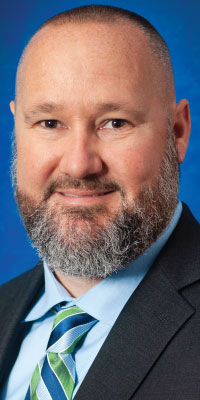
Ash: I try to lead by example and to be a servant leader. It is my job to put people in the best position. I’ve got to be doing what I’m saying. I also have to be cognizant of how we’re moving, and where we’re moving.
Calderone: It’s my job as a leader to set overarching goals, communicate those goals effectively, and coach/motivate my staff into achieving them. I aspire to be a mentor and not a micromanager. Sometimes something needs to happen immediately, and that’s when I flip the switch to problem solving mode, but more often than not, I try to be the one asking questions, not providing answers.
Dunne: Personally, I’m very detail oriented. I like to stay organized and work efficiently. As I was an apprentice not that long ago, I try my best to be inclusive with apprentices. The leader I would aspire to be is one that allows everyone to speak freely and want to contribute and to participate.
Holmes: My leadership style is leadership as a service. I have never perceived myself to be above any task that anyone on my team does. Every single job that I oversee is a job that I’ve done in my career. I’m interested in knowing what it is that my team needs to do their jobs to the best of their ability. Really paying attention to what’s going on and what’s happening with my team. Sitting in front of the computer or being on the phone for 11 hours a day makes for a long day. In our role of customer service and support, unfortunately, the majority of customer interactions do not start with the happiest customers. To help recharge my team, the second half of our team meetings are focused on team bonding, where we do "game night" style activities, such as ice breakers, charades, and board games. It has been very rewarding to see the positive impact that this has had on the team.
Bueché: My leadership style is best described as transformational. I really enjoy empowering others and inspiring changes that take our team and organization to the next level! I love looking for new opportunities to do things differently and am always open to innovation and new ideas.
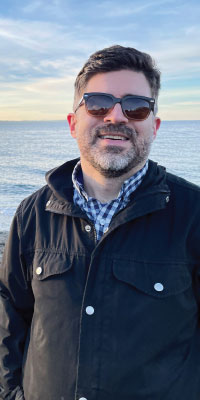
Teitt: My leadership style has evolved over time, and it is continuing to evolve. It is important to adapt as a leader to specific situations, and also the personalities of the people you are working with. I try to be open to the process that individuals take to arrive at a result. I aspire to lead by example - striving for excellence in the work I produce and to be able to develop and empower my team. That includes transferring knowledge, how to handle various situations, and providing them opportunities to grow and be challenged.
Logsdon: I aim to lead from a place of integrity and accountability, and to empower teams to achieve clear outcomes. That last point is key — there is a multiplier effect when we are all clear on what we are trying to achieve. Teams feel empowered to work towards those goals, and psychologically safe to put in the elbow grease to achieve those outcomes and can take pride in their work. If we are moving the needle for our customers, I want to recognize the teams that are putting in that effort, even if the path they are taking is different than I might have taken. I also aim to demonstrate for my team a commitment to building authentic relationships with our customers and prioritizing them above all else.
Oelke: I spend a lot of time thinking about what others need to do their job…and enjoy it. I guess that would be a people-first approach. I have been the most productive in my work when it is clear to me where I can make a difference and where I can’t. Creating a team environment where others can experience this same sense of clarity is rewarding. And it makes for a fun place to spend your working hours.
What resources – or sources of inspiration – do you look to develop your skills?

Teitt: I’ve had the opportunity to work with a lot of people from different backgrounds – including elected officials and executives. I have used that as a resource to cultivate my leadership over time. I try to learn from situations to help me transition from a manager to more of a leader. Using some of the resources we have in AMP, e.g., access to LinkedIn learning, means I have a lot of videos to help me along that path.
Logsdon: We all have different roles in our lives, and there is the potential to learn leadership skills in all of them. I have found that aspiring to be a good father and good husband has made me a better boss, and vice versa — the key is showing up authentically and being willing to learn and grow. I have learned the most from the leaders above and below me — they keep me honest, give me feedback, and push me to be even more committed to our values and the outcomes we are working towards for our customers. Debra Smith, City Light’s outgoing CEO, has been an inspiration to me in terms of the sort of public power leader that I aspire to be on all of those fronts.
Dunne: While [HGE] offers pretty rigorous safety and professional development, my main resource are the other employees, especially my crew members and direct supervisors. We bounce ideas off of each other. One person may be better at one thing versus another. Our engineering dept has been great, always able to assist with calls, etc. Everyone works really well together.
Calderone: The City of Naperville runs an excellent Emerging Leaders Program. I was lucky enough to be selected, and graduated from that program in 2019. Through it, I discovered some wonderful leadership training courses at our local community college (College of DuPage). I also developed working relationships with my fellow emerging leaders, past and present, and they have been a great resource.
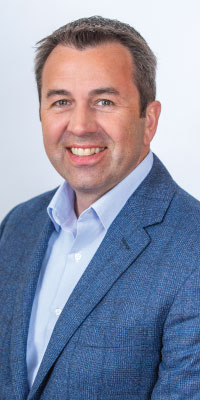
Oelke: There are two tools that completely changed my perspective on leadership. Gallup’s CliftonStrengths identifies unique talents that you bring to your work and how those talents can form your own effective leadership style. Human Synergistics’ Life Styles Inventory gets at how you think about and do work, and whether that behavior is constructive for others or not.
Holmes: I’m a lifelong learner. I went directly from undergraduate studies into my MBA program. It was exhausting, but prepared me for my chosen career path. I consistently work on developing my soft skills and on keeping my technical skills as sharp as possible. I enjoy reading and I’m always looking for reading materials, especially publications that are specifically focused on leadership/communication. In addition, every year I enroll myself and my leadership team into a skills-based program.
Ash: I really lean on a lot of my networking with committees I’m involved with at APPA. You can go to conferences, take classes, or sit through webinars, but getting to learn from each other firsthand is some of the best learning that I’ve had. In just the downtime with the committees, we always end up talking about the challenges we have, who may have faced them, and what are you doing to get around them.
Bueché: A favorite quote of mine is to “live simply, love generously, and learn constantly.” I am a big believer in continuing education. One thing I admire about KPUB is how much we invest in our employees through ongoing professional development and training programs. We also have a great environment where our colleagues share their expertise and skills, including through monthly lunch & learns. I frequently attend APPA’s conferences, online webinars, and program offerings, and I try to keep up with all of the great information in the Public Power Current and Public Power Magazine. I am very involved locally with our chamber of commerce. I am a graduate of its Leadership Kerr County program and regularly attend the chamber’s professional development seminars and educational opportunities.
What kind of outlook do utility leaders of the future (or present) need to have?
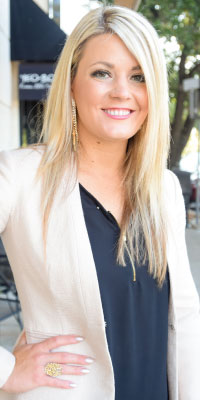
Ash: We are in the middle or nearing the end of having a lot of experience leave. One thing that public power probably hasn’t done as much as we should have is document a lot of that industry expertise.
Holmes: Communication is imperative. Really focusing on communicating with and engaging your team, as it’s important to enable them to ultimately give their best. Another challenge that I’ve dealt with over the past few years is with the incoming workforce – their mindset is completely different than what I've historically encountered. Their staying power is not what we’re accustomed to. The incoming workforce is seeking options to work remotely or take days off to focus on their mental health, which is extremely important and we as utilities need to know how to support these needs.
Dunne: Be prepared for electrification. I recently went to a high school career day, and I was telling the kids there, [energy] seems like the place to be for the future. Individual capacity that customers will be using is going to go up pretty greatly in next few decades. Having background in basic electrical theory can help. You need to be willing to change… to be able to adapt and overcome. A lot of times this job isn’t so cut and dry … the same project in a different part of town can have its own variation. Listen to some of the younger employees – they have a lot to offer as well. Listen to the community – they are asking for [certain things], they want to be involved.
Logsdon: We must keep a growth mindset — we are an industry in transformation that is constantly changing and taking on new responsibilities. We must stay open to and embrace this transformation and also foster psychologically safe workplaces that attract the new talent we will need to work towards an expanded future. We need to stay fixed on the destination we are working towards and flexible in supporting the teams under us as they carve new paths to get there. At the same time, we must chart the path for all of our teams and recognize the value that they deliver to our customers on a daily basis.
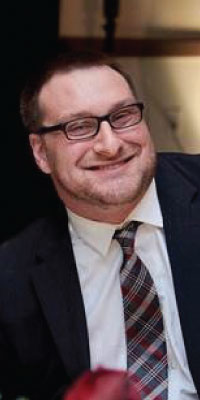
Calderone: They need to have a growth mindset. Electricity users are connecting to the grid in ways they never have in the past. They are also demanding more visibility into usage and generation sources than they ever have. Public power has a reputation of being slow to adopt changes — that reputation needs to change.
Bueché: Today’s utilities are ever-evolving. Utility leaders must have a flexible outlook and be willing to adapt to change.
Oelke: I often say, “The answer is important. But it is rarely as important as how people feel about the answer.” This has never been more evident than with today’s political environment, where there are a lot of strong and disparate opinions. We can’t expect Congress to change. But in public power, we have a compelling model with a shared sense of purpose for all our stakeholders to agree on…and feel good about.
Teitt: One constant is the importance of putting a focus on continuously developing a talent pipeline in your organization at all levels. Having the right people in the right places can be a blessing, but it can be a challenge to keep people there and keep them learning. Whether a lineman or you as a leader, making sure you have people developed into those positions. Making sure you are fostering and equipping the transfer of knowledge to the next level of leadership.

